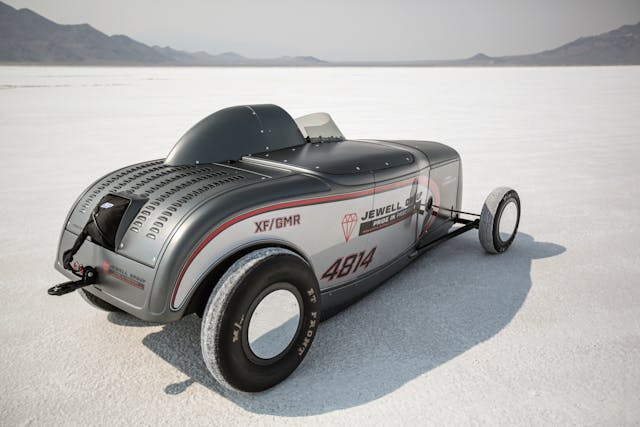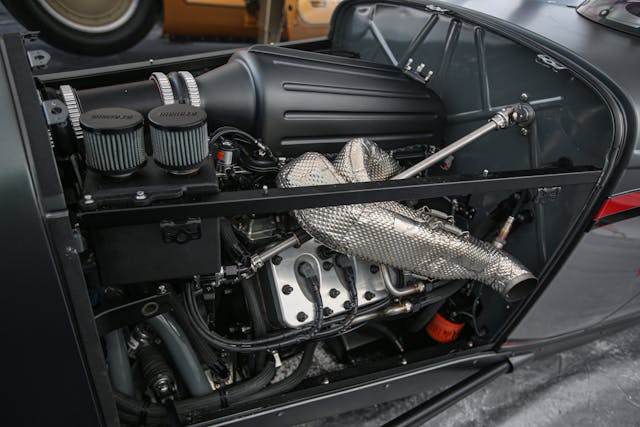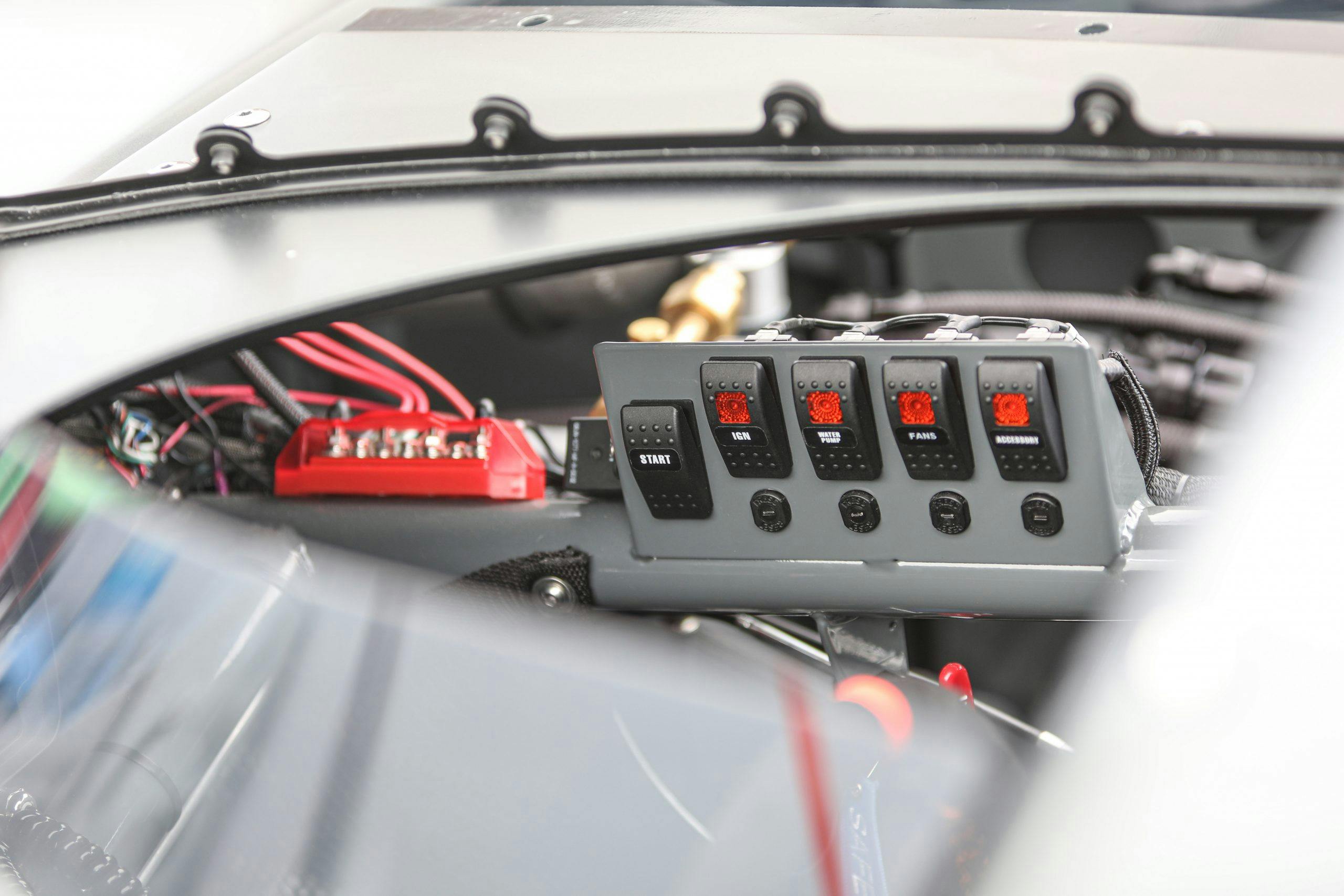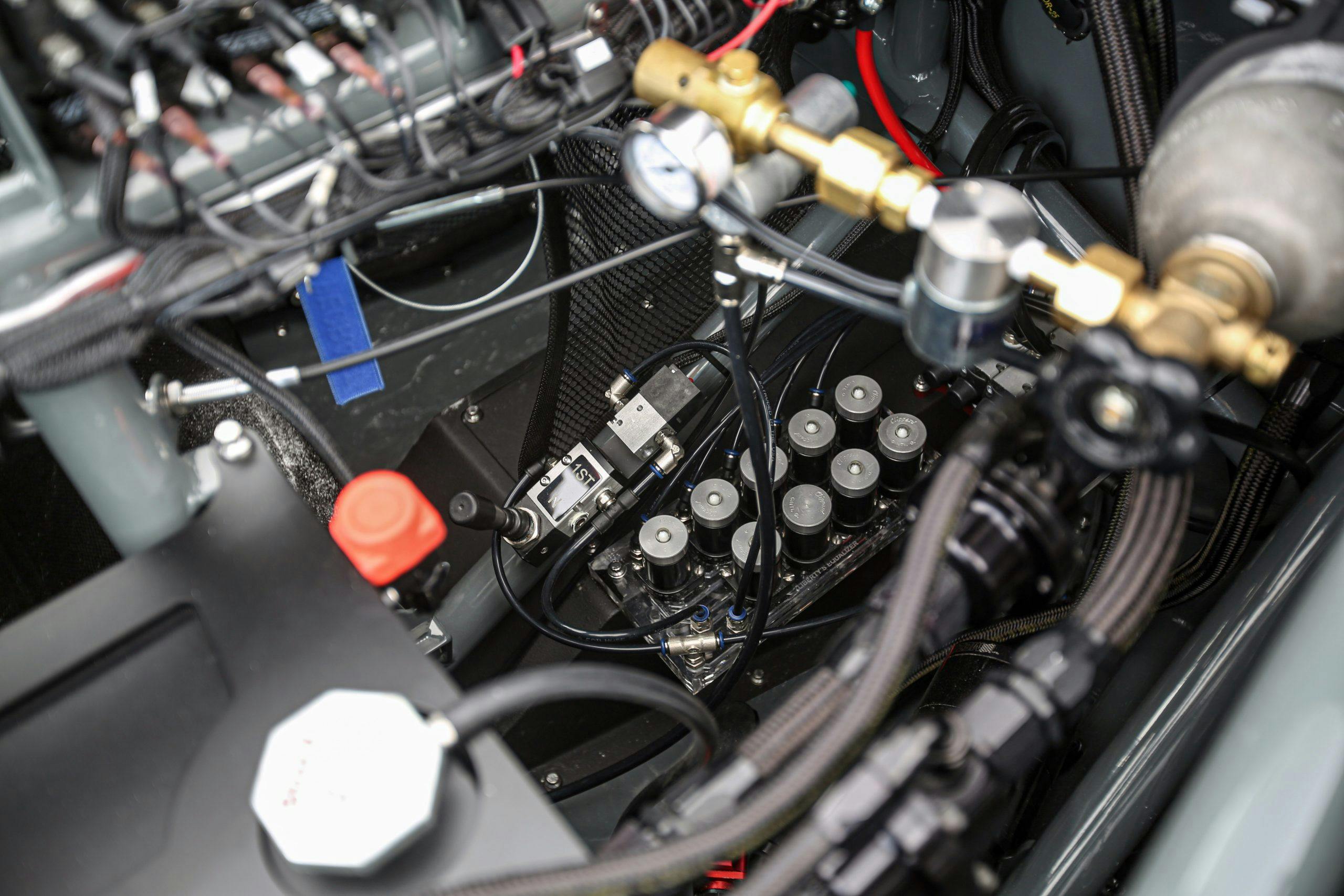A seriously mean flathead V-8 powers this Bonneville record holder
Bonneville Speed Week brings out all shapes and sizes of race cars, and their powerplants are also just as diverse. Poke your head under the hood of some of the salt’s fastest cars and you’ll see everything from nitro-guzzling Hemi V-8s to turbocharged Toyota 2JZ inline-sixes. Those are engines you’d expect to see in various racing venues across the nation, but one engine that you’ll still see quite frequently at Bonneville—one that you’re unlikely to come across at your local drag strip—is Ford’s flathead V-8.

When Bonneville Speed Week was first held in 1949, there certainly was no 2JZ around. There was no 426 Hemi either, and the Chevy small-block V-8 was still years away. In abundance, however, was Ford’s famous flathead V-8, and it powered hundreds of racers on to land speed records. Today, there are vintage engine classes for those that still want to run a flathead and chase records in the same classes that made history at Bonneville way back when.

Matt Jewell is the President and CEO of Jewell Group, a manufacturer of industrial cutting tools that also does its own CNC machining. Jewell put together a flathead-powered ’32 Ford roadster in 2015 to take on the XF/GR class that epitomizes land speed racing at Bonneville.
For those not up on Bonneville class lingo, XF is the engine class for “any production Ford/Mercury passenger car V-8 flathead engine, 1932–1953, up to 325 cubic inches.” The ‘GR’ in ‘XF/GR’ stands for Gas Roadster, which means the car must be powered by the race gas provided on the salt; Roadster refers to 1928–1938 cars running bodies that are either original or exact reproductions thereof. There aren’t many allowable aerodynamic modifications in the class and, like other vintage classes, electronic fuel injection is forbidden. In general, the cars look like something you might have actually seen braving the salt in the ‘40s and ‘50s. Underneath those factory-appearing bodies, however, things can get a lot more modern, as is the case with Jewell’s roadster.
Jewell had hoped to race the car at Speed Week in 2015, but it was rained out. Once the conditions on the salt improved, he spent years chasing the current XF/GR record, which was set in 2012 at 161.081 mph. Jewell tried a few engines and transmissions and couldn’t close in on the record, so he headed to Troy Trepanier’s Rad Rides by Troy for some serious tweaks.
Marketplace
Buy and sell classics with confidence

Jewell told us that the engine that the Rad Rides guys helped bring to fruition was a “much more elaborate piece than we’ve done before.” Lawrence Laughlin was the one that was responsible for much of the intricate machining at Rad Rides that helped this 8BA flathead produce about 300 horsepower—nearly triple what it would have produced when it was built in the early 1950s. The serious horsepower overhaul required a total rethinking of how to get air into and out of the engine. Rather than snaking the exhaust through ports that heat up the block and choke the engine’s potential, this new engine pushes the exhaust through the former intake ports.

This “reverse flow” idea isn’t new, but this engine’s new intake ports are unique. “Way back in the day, guys did use the exhaust ports,” Jewell told us. Not this time, though: “We abandoned those (the old exhaust ports) and cut new intake runners near the original exhaust runners,” he explained. The new intake ports cut into the block’s water jacket and into some bolt holes, but the team engineered around that. After the first machining passes established the new ports, the block’s water jacket was eliminated by filling the block with a concrete-like compound. Then the block was machined again to reestablish the new intake ports. Now there’s no longer any coolant in the block, just in the heads.
The engine was ready for its racing debut in 2020, when Jewell was able to qualify for the record and deliver, setting the new record at 165.558 mph.
“That engine represents a couple of thousand hours of flowbench testing, machining, and problem-solving,” Jewell said, and he hoped that in 2021 it could bring one more record to the team as it transitioned the car to compete in the XF/GMR class. The ‘M’ stands for ‘Modified’ and the class allows for a few more aerodynamic changes, like the use of a full belly pan and rear diffuser; the “stepped pan” that Roadsters may use can only start at the firewall and end at the center of the rear axle.

The current XF/GMR record stands at 165.189 and Jewell and his team hoped he could repeat his 2020 performance at Speed Week 2021. Unfortunately the engine was a bit down on power and he recorded a 161.158 mph pass. A teardown after Speed Week revealed the limited issue. “We had an oiling problem, probably pretty early on after the last rebuild,” Jewell told us. The damage included three scored pistons and some stuck piston rings. Nevertheless, the team was encourage by the car’s handling, with Jewell noting that car was actually fairly stable following the modifications done in the wind tunnel.
The Jewell Group team looks to be back on the salt at Speed Week 2021 to challenge the XF/GMR record that proved just out of reach. With the engine only a bottle away from being nitrous-fed, there’s always the chance to tackle the 182.023-mph fuel record in Modified Roadster as well. We’ll be cheering them on when they return to the salt.


































